Early-stage B2B tech startups often face a big challenge: how do you get noticed and attract customers on a scrappy budget? This is where content marketing comes in. By creating and sharing valuable content, startups can leverage content marketing to punch above their weight – educating their market, building authority, and drawing in leads without burning piles of cash.
In fact, content marketing is significantly cost-effective: it costs around 62% less than traditional marketing yet generates 3× more leads. Beyond the lower cost, it builds trust and credibility that ads can’t match. 95% of B2B buyers consider content a trustworthy way to evaluate a company. In short, startup content marketing is the key to educating your ideal customers and earning their confidence.
This guide covers 10 essential steps to leverage content marketing for tech startups with examples and best practices.
1. Start with defining your goals and target audience
Content marketing is a strategic tool for tech startups to build visibility, establish authority, and engage with potential customers throughout the buyer’s journey. Unlike paid advertising, content delivers long-term value by educating, informing, and building trust with your audience.
Setting goals
Setting clear, measurable goals ensures every piece of content has a purpose and aligns with your business objectives. Goals help you decide:
What type of content to produce (ex: blog posts, whitepapers, videos)
Which channels to use (ex: LinkedIn, developer forums, newsletters)
How to tailor messaging for different stages of the funnel (awareness, consideration, decision)
For example, if your goal is lead generation, you might create gated content like eBooks or webinars. If your focus is on retention, your content might include tutorials or product use cases.
Here are a few examples of goals that a tech startup can set and content marketing tactics that can be used accordingly:
Increase brand awareness in competitive tech landscapes
Create educational blog content, social media posts, and video podcasts about your industry topics, technology and mission.Position your startup as an industry thought leader
Produce thought leadership articles, industry reports and studies, participate in round tables and industry eventsGenerate qualified leads organically
Develop gated assets like free tools, downloadable templates, or high value video content to capture potential customers.Reduce churn through better onboarding
Use product tutorials, FAQs, technical guides and community-driven forums to explain how your product works and improve user experience.
Defining your audience
Targeting the right audience — the one that actually converts — is also essential for a tech startup. Rather than trying to reach everyone, your focus should be on the segment of users most likely to benefit from your solution and take action.
Understanding this group deeply will help you create content that resonates, engages, and ultimately drives growth. To do this, start by answering the following key questions:
Who makes the buying decision?
Identify the persona who owns the budget and / or will make the buying decision about your product. In a B2B context, this might be a CTO, product manager, or operations head. Understanding their role helps tailor messaging and tone.Who is working closely with your buyer persona?
Often, the decision-maker relies on advice from colleagues or other stakeholders — such as developers, IT teams, or financial officers. These influencers can shape perceptions, so it’s valuable to understand their concerns and address them in your content as well.What kind of challenges do they have?
What specific problems does your audience face that your product solves? Are they dealing with scaling issues, security concerns, or a lack of automation? Clear answers here ensure your content speaks directly to their pain points.What topics do they want to learn about?
What information will help them do their job better, make smarter decisions, or evaluate new solutions? For a tech startup, this could include guides on new tools, industry trends, or how-to tutorials related to your product’s domain.How do they learn?
Do they prefer in-depth whitepapers, quick blog posts, podcasts, or video tutorials? Matching content format with how your audience consumes information increases engagement and retention.What channels do they use to get information and solve their challenges?
Are they active on LinkedIn, GitHub, Reddit, or industry-specific forums? Do they rely on Google searches or newsletters? Knowing where they go for answers tells you where to distribute your content.What kind of media, communities, and opinion leaders do they follow?
Who influences their thinking? This could be specific blogs, YouTube channels, newsletters, Slack groups, or thought leaders in your niche. Partnering with them or referencing these sources can boost your credibility.
This strategic approach ensures every piece of content you create works harder, delivering value and driving results — exactly what a resource-conscious startup needs.
Example: Gong
Gong has implemented great content marketing tactics showing that when your content is uniquely data-driven, audience-specific, and distributed smartly — it not only educates your market but makes your product essential. Let’s take a closer look:
Industry: B2B SaaS – Revenue Intelligence Platform
Goal: Educate sales leaders on the power of data-driven decision-making in sales and drive adoption of their platform.
Target Audience: Sales executives, revenue leaders, and sales enablement professionals at fast-growing B2B companies.
Gong used anonymized, aggregated data from sales calls to produce Gong Labs reports.
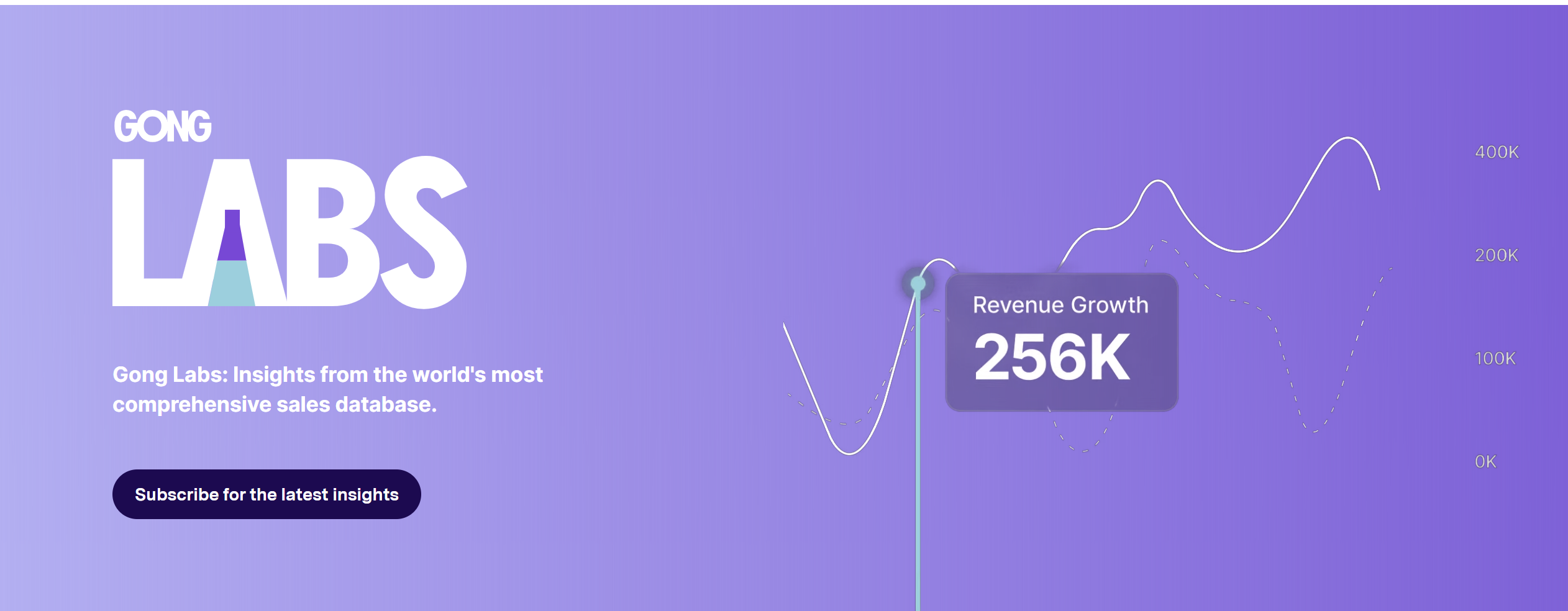
This content stood out by combining original research, actionable advice, and sales psychology. They directly addressed their customers’ issues with insights drawn from real sales call data — making it both educational and unique.
Gong adopted a witty, no-BS tone tailored specifically to busy, often skeptical sales professionals. They focused on how to win more deals, not just their product features.
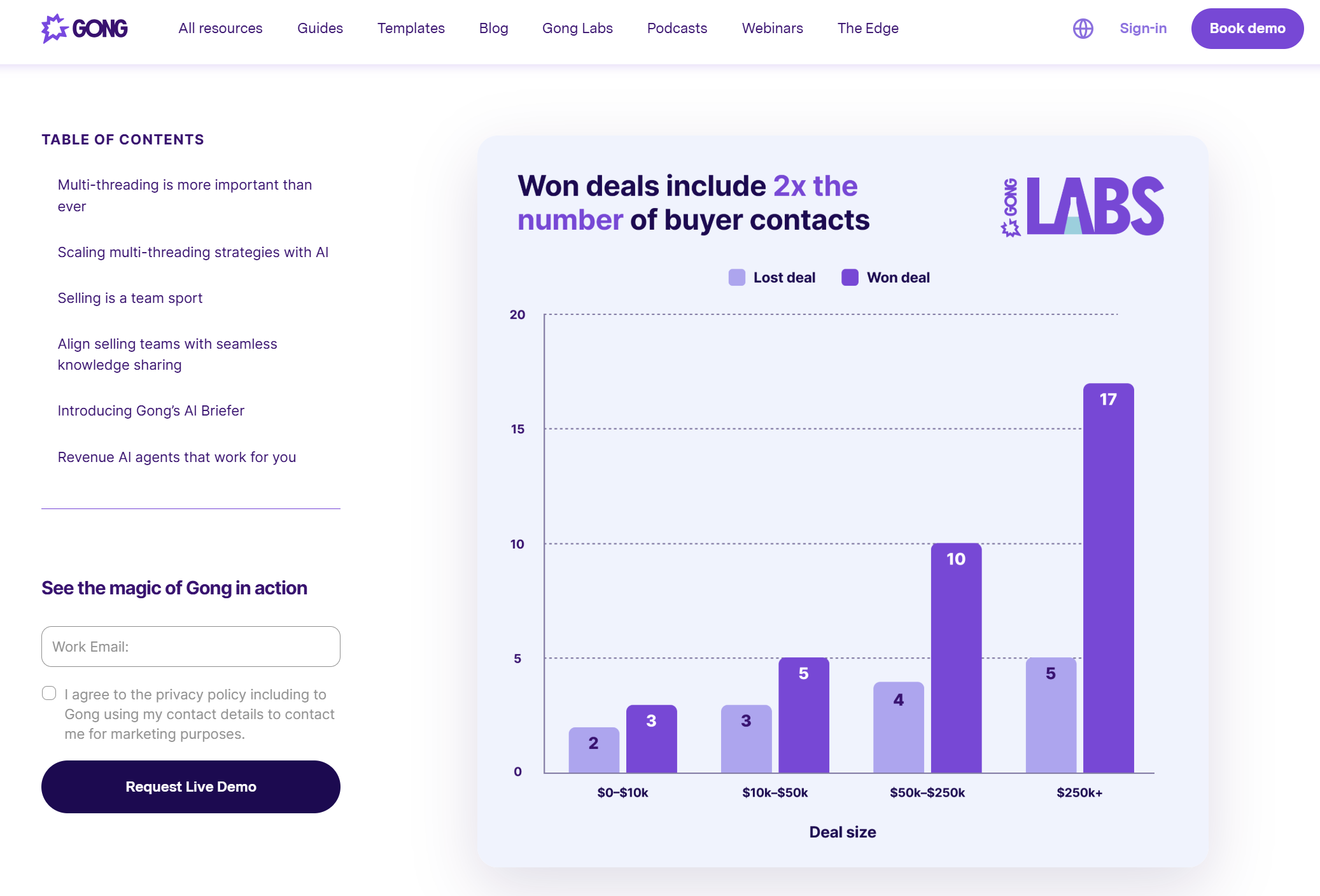
They also encouraged employee advocacy, turning team members into thought leaders. Their sales and marketing teams actively posted short insights and micro-content on LinkedIn.
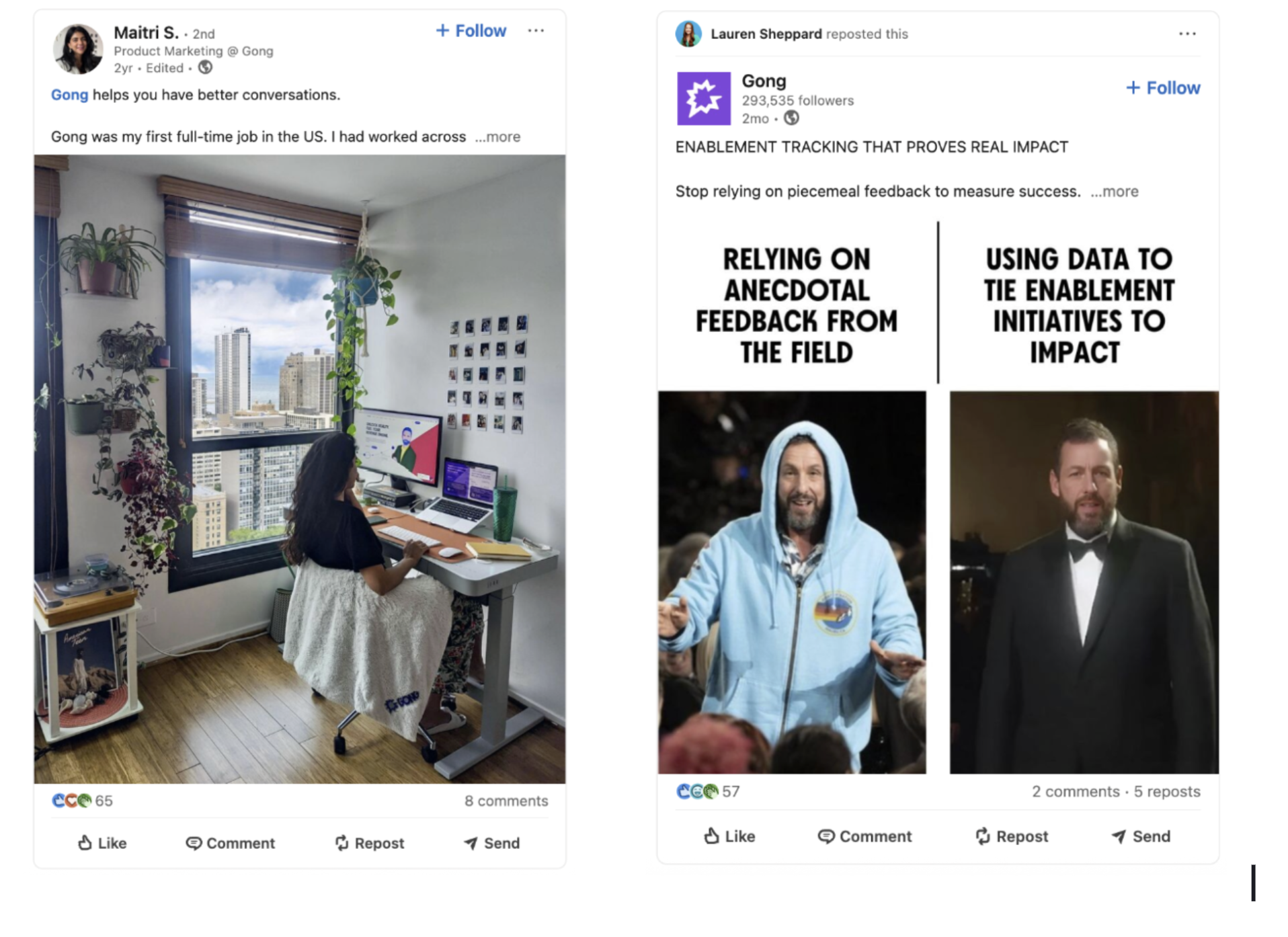
As a result, Gong became one of the fastest-growing B2B SaaS companies in their category. They earned massive brand awareness and credibility among sales professionals. Their content became so valuable that it was frequently shared and cited by the sales community — creating viral, word-of-mouth growth.
2. Build content that supports your funnel
Creating content by funnel stages is crucial to align your messaging with the buyer’s journey. Each stage of the funnel reflects different levels of interest and intent:
Top of the funnel (TOFU) - Awareness: audience doesn’t know they have a problem or are just realizing it.
Goal: help your audience recognize the challenge.
Content: blog articles, social media posts, infographics, video podcasts.
Middle of the funnel (MOFU) - Consideration: audience knows their problem and is evaluating solutions.
Goal: spark curiosity about what you offer.
Content: case studies, comparison guides, webinars, email sequences.
Bottom of the funnel (BOFU) - Decision: audience is ready to choose a solution.
Goal: convert leads into paying customers.
Content: product demos, testimonials, sales decks, landing pages.
Creating TOFU content
For a tech startup, TOFU content needs to cut through the noise, educate without selling, and build credibility fast.
Creating traditional TOFU content like educational articles and social media posts can be efficient if done the right way. I’ll provide you with a few ideas that go beyond that and can help you stand out:
“No-code tech” Learning Hub. Create a free content hub for non-technical users who make or influence the buying decision. Provide them with practical guides, videos, templates, and cheat sheets helping understand your space. Example: “AI for HR: the complete guide for beginners”.
Open source tools and templates. Release free tools that solve a common problem in your industry. It can help you boost website traffic, generate leads, and build domain authority. Example: a DevOps startup builds a “CI/CD health checker” tool.
Industry predictions timeline. Build an interactive timeline or generator showing predictions for your industry. Thought leadership + engagement = TOFU gold. Example: a Fintech startup could launch a “Future of Finance” timeline based on trend data and expert interviews.
“Startup struggles”, user-generated content campaign. Ask users to share their biggest tech headaches. Compile their comments into a “real talk” content series. This kind of content can help you build community, collect pain points, and generate high engagement.
Live Ask-Me-Anything (AMA) with micro-influencers. Host live chats with startup founders, junior devs, or overlooked experts — not just big names. This way, you can create authentic content and connect with your target audience. Repurpose AMAs by turning them into blog posts or podcast episodes.
Pocus, a product-led sales platform, has leveraged AMAs as a cornerstone of its community-building efforts. It helped them cultivate an engaged community and become a thought leader in the product-led sales space. Here is the Marketing Powerups podcast where Sandy Mangat, Head of Marketing at Pocus, shares how they leveraged AMAs as a part of their community building strategy:
The main goal of creating TOFU content for a startup focused on revenue growth is to attract and educate potential customers early in their journey, building awareness and trust that can later convert into qualified leads and sales.
Creating MOFU content
Creating MOFU content serves to nurture leads, build trust, and differentiate your solution during a critical phase of the buyer’s journey.
At this stage, leads already know their problem. Now they’re evaluating possible solutions. MOFU content helps move them from general interest to consideration of your product. Let’s take a look at a few examples:
Myth-busting study. Create a downloadable mini-report that debunks common misconceptions in your industry (example: “Why AI doesn’t replace engineers”). This report can be backed up by your product usage data, customer insights, or results from an industry survey. Use it as a lead magnet or drip campaign kickoff.
Customer Lab stories. Publish blog posts or video series that deep dive into how users are experimenting, customizing, or hacking your product in unique ways. It highlights your product flexibility and inspires others to test use cases.
“Before & After” workflow visualizations. Build dynamic, side-by-side flowcharts or storyboards showing life before and after adopting your tech. This way, you can make transformation visually obvious and showcase your value to potential customers.
Smart comparison generator. Develop an interactive form where users select competitors and features they care about, and receive a dynamic comparison chart that shows how you stack up. You can save your sales team hours by helping users self-justify their decision.
Interactive ROI calculator. Release a web-based calculator where users input their own metrics to see potential ROI using your product. Embed it in your pricing or product pages, and link it in nurture emails. It creates personalized experience and lets users quantify value in their own terms.
Zluri provides an ROI calculator tailored for SaaS management. It allows businesses to input details like the number of employees, total applications, and annual software spend to estimate potential savings from discovering redundant apps, shadow IT, and automating IT tasks.
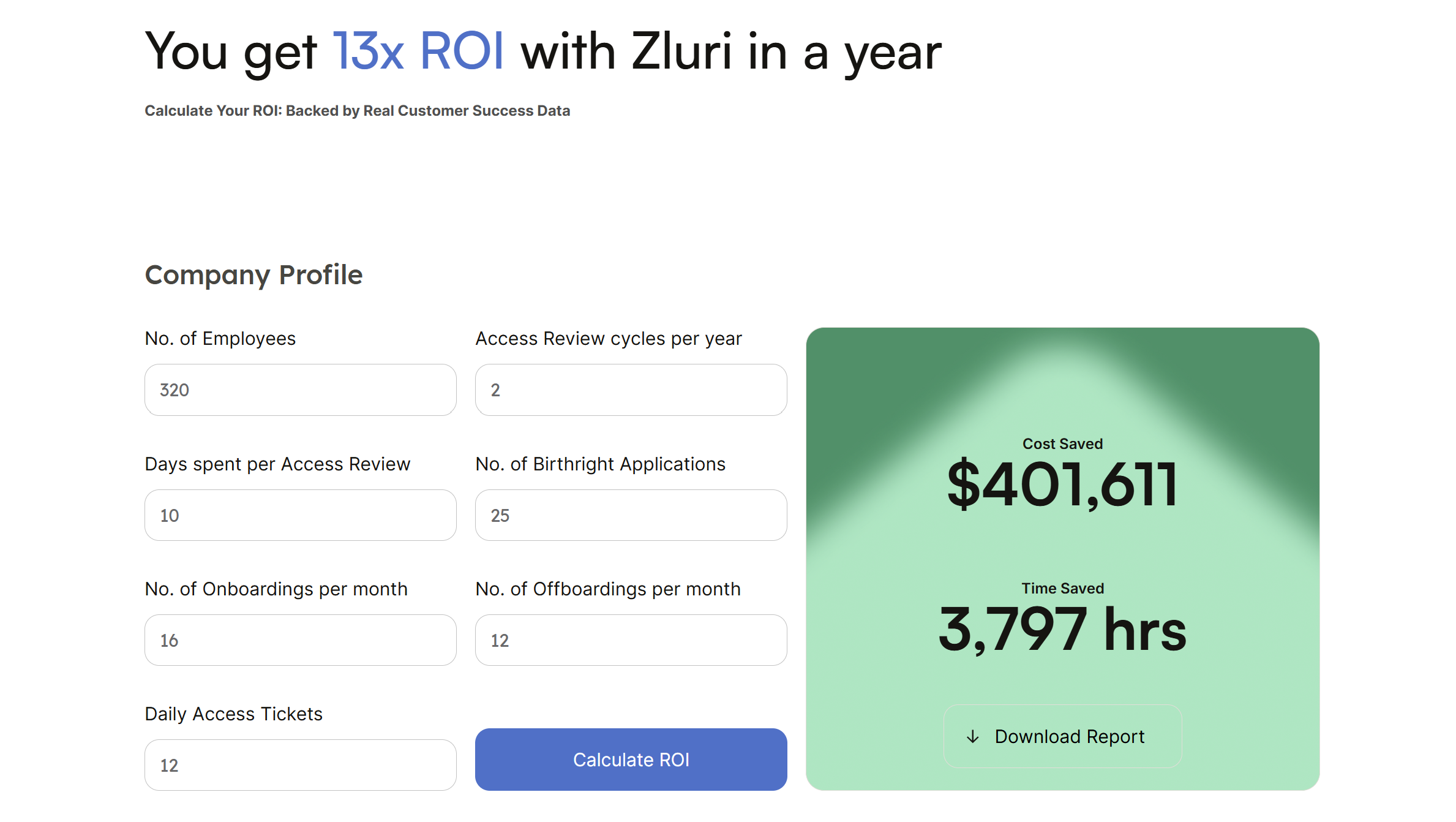
MOFU content bridges the gap between awareness and decision. Without it, your leads may lose momentum — or worse, choose your competitor.
Creating BOFU content
BOFU is the decision-making stage where prospects are evaluating whether to buy your product or go with someone else. BOFU content speaks directly to purchase intent. It's not about education, it's about giving the final push.
Here is how you could leverage BOFU content as a tech startup:
Deal justification kit. Create a deck or a Notion page that helps your buyer internally justify the spend to finance or leadership. Provide an ROI summary, competitive matrix or a security checklist. AEs can use it to empower internal selling and build confidence for non-users.
"Exec Summary" one-pager. Design a beautifully simple PDF or slides designed specifically for C-suite readers. Highlighting potential outcomes, implementation plan, case study stats, and success stories. Provide your buyer with what they need to escalate fast.
Sales objection library. Create a private page or a video answering common sales objections from your CEO, PM, or top AE. Examples: “Why are you more expensive than competitors?”, “How do you store user data?”. It shows transparency and humanizes your team reinforcing confidence at the buying moment.
Custom tech stack visualizer. A personalized page or a doc showing how your product fits into their current tech stack and enhances it. Let the sales team use a templated tool to drag & drop logos and generate tailored visuals in minutes. It helps reduce IT objections and shows a deep understanding of their world.
Interactive product walkthrough. Launch a click-through or scroll-based visual guide that shows how easy (and fast) onboarding your product is, even with limited resources. It helps you remove friction and address your customer’s concerns. Use tools like Webflow, or a lightweight design tool like Canva.
Notion offers an interactive demo where users can explore their features via guided tours. It simulates real usage scenarios, letting users visualize how the tool would fit into their workflow without needing a full signup.
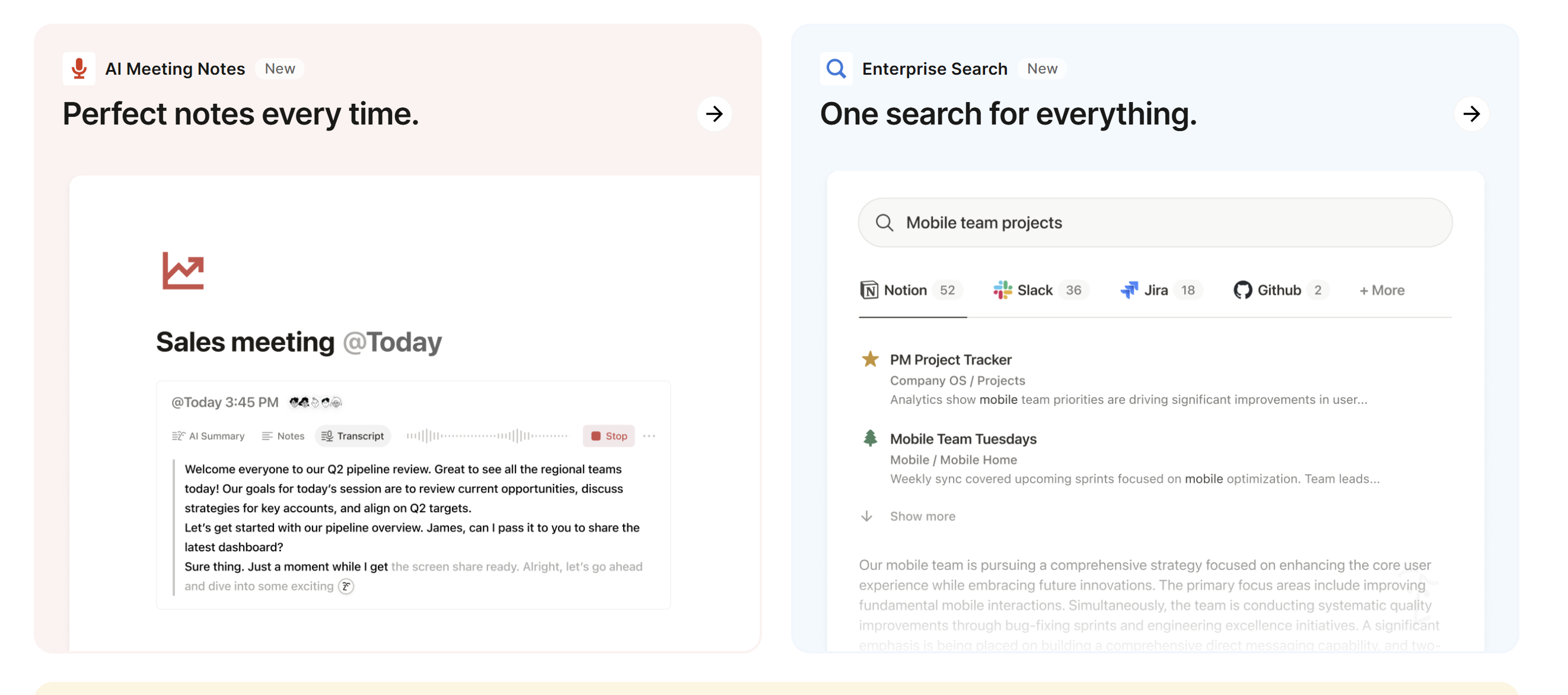
Creating great BOFU content is crucial to avoid losing deals to competitors who provide clearer proof of value, trust, and ease of implementation.
3. Develop content clusters on your website
A topic cluster is a structured content strategy built around a central “pillar” page and supported by multiple interlinked “cluster” pages. For example, a startup offering DevSecOps solutions might build a cluster around “cloud security,” with pages on zero trust architecture, OWASP best practices, and Kubernetes vulnerabilities.
This approach builds topical authority, a key signal for both traditional search and AI-powered discovery:
Higher visibility in AI-generated responses that value entity associations and brand mentions.
Improved UX and engagement as users navigate logically structured, deeply informative content.
Boosted semantic authority through internal linking and keyword clustering.
Large language models don’t “rank” pages, they synthesize content based on the concepts, patterns, and sources in their training data. They favor brands that:
Are frequently mentioned across authoritative content
Demonstrate depth of coverage on specific topics
Are interlinked semantically, showing contextual relevance
Content clusters increase the likelihood of being referenced because they:
Establish your brand as a trusted source
Populate LLM training sets and retrieval layers (like in Perplexity or Claude)
Match the question-and-answer format AI prefers for summaries and recommendations
To begin building your content clusters, content marketers tend to follow this approach:
Choose a pillar topic: Select a theme core to your product and relevant to your audience. Use tools like Semrush, SparkToro, or even ChatGPT to identify high-potential keywords with strong search and semantic relevance.
Create a pillar page: Write a definitive, high-quality guide that gives a broad overview of your topic. Think: “The Ultimate Guide to Localization for SaaS” or “What is API Security?”
Build cluster pages: Write supporting articles that dive deeper into subtopics. Each should link back to the pillar page and to each other where relevant. For example:
Pillar: AI-Powered Localization for Global Teams
Cluster: How to Localize UI Strings Efficiently with AI
Cluster: Choosing the Right TMS for Continuous Localization
Cluster: Translation Memory vs. Glossary: What’s the Difference?
Use internal linking with intent: Use anchor text with contextual relevance. This helps AI engines infer the semantic structure of your content and builds crawlable paths for users and bots alike.
Optimize for mentions, not just links: Mentions of your brand, product, or unique terminology
4. Build a GEO-optimized website that drives content discovery
Today, your website won’t just be visited by humans, but also by bots, AI agents, and language models crawling for information, context, credibility, and clarity. Tech startups need websites that attract both users and AI engines, necessitating the adoption of generative engine optimization (GEO).
Here are some ways to deliver value, rank organically, and get picked up by AI summaries and search interfaces.
Ensure scannability and AI parsing by using semantic HTML headers (H1–H5) with keyword- and entity-rich phrasing.
Break content into clearly labeled sections (e.g., “How It Works,” “Use Cases,” “Industries”).
Use bullet points, tables, comparison charts, and FAQs, formats favored by AI Overviews.
For example, Google AI Overviews often pull list-style responses and FAQs. If you’re targeting keywords like “how to localize an app”, structure your answer as a step-by-step guide and use structured FAQ schema to enhance discoverability.

Make sure you give your homepage, product pages, pricing, and “About Us” pages a GEO make over as well. You can do so by:
Use natural language that reflects how people describe your product. Add conversational phrases and entity names. Example: “A secure, AI-powered platform for document translation and localization, trusted by global brands like Siemens and Bosch.”
Include long-tail keywords and real customer pain points. Add clear outcomes. Add a quick Q&A or “Common Scenarios” section with voice-search-style phrasing.
Highlight founder credentials, brand mission, and press mentions to build trust signals. AI engines weigh authority heavily.
Include quotes, statistics, and outcome-driven language. Structure them in a way AI can easily parse (e.g., problem → solution → result).
Persona Identities, a San Francisco Startup that helps companies with KYC/AML/KYB programs, fight fraud. The startup made sure to include their brand mission, values, press mentions, investors list, and G2 reviews on their About Us page.
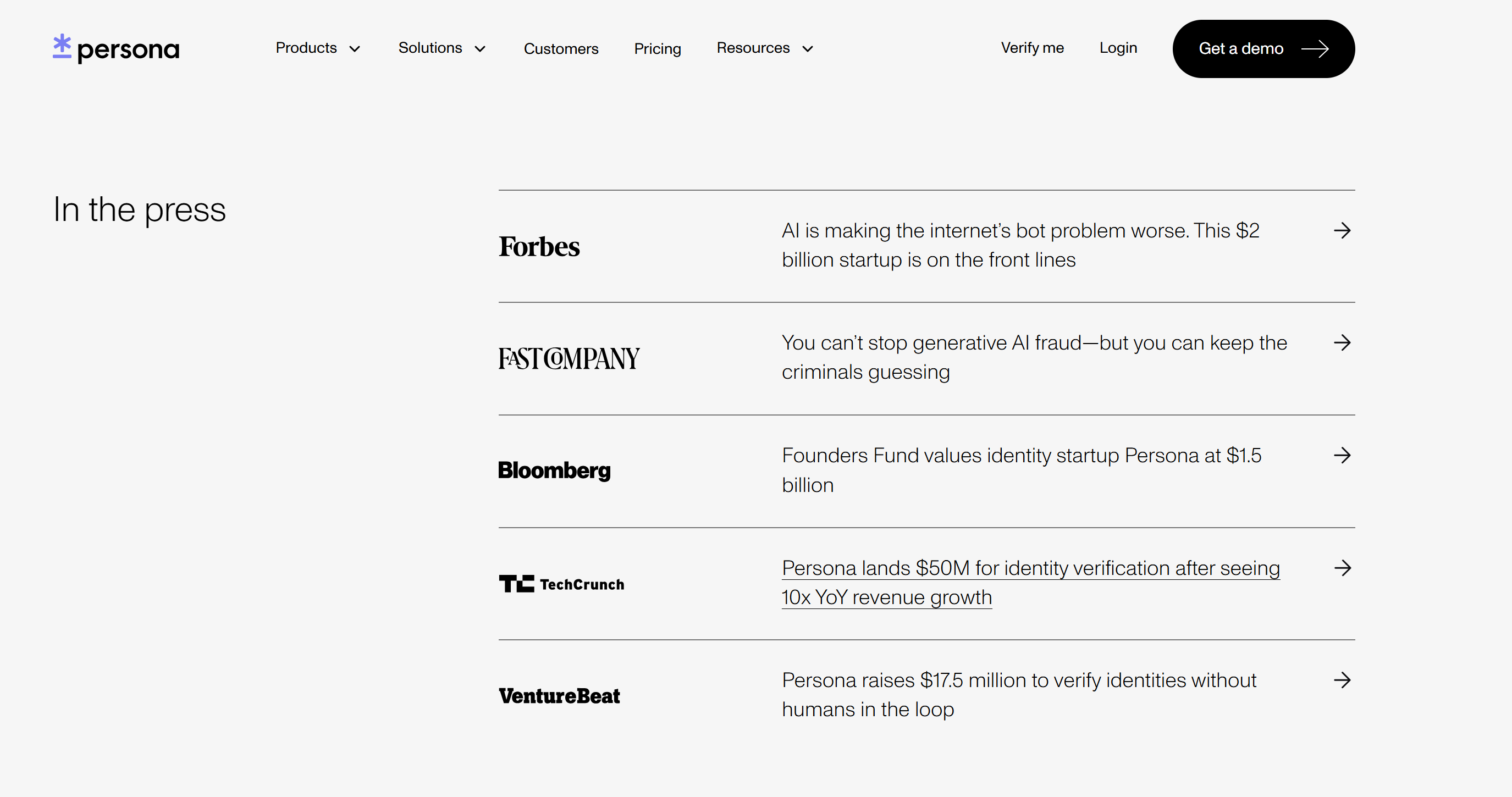
Already did your SEO keyword analysis? For GEO, you should zone in on conversational search queries (e.g., "What’s the best platform for AI-powered localization?"), related entities, and semantic variations.
To further enhance AI visibility for your content, you can also implement these technical layers:
Utilize FAQ, Product, and How-To schema for clear structure.
Incorporate ImageObject and VideoObject schema for multimedia recognition.
Use Breadcrumbs, Organization, and Review schema for better entity recognition.
Once your site is GEO-optimized, amplify visibility by spreading content across:
AI-friendly platforms: Share on LinkedIn using thought-leadership snippets that mirror blog subheadings
Reddit or Slack channels: Drop relevant posts into threads where your ICP (ideal customer profile) hangs out
Repurpose content: Turn guides into carousels, FAQs into Instagram Reels, and blog summaries into ChatGPT prompts
Each of these signals content quality and authority, which helps AI prioritize you.
5. Expand your reach with guest posts and PR
To broaden your startup's reach, publish high-quality content on external platforms via guest blogging and media coverage. This introduces your startup to potential customers and earns valuable backlinks for SEO and credibility.
To start guest posting:
Compile a list of industry blogs and publications that accept guest contributions.
Analyze their content to identify popular topics and styles, then brainstorm article ideas that fit.
Send a short pitch that introduces you and your startup. Include an article idea with a headline and bullet points. Focus on the value for their readers.
Write a high-quality, non-promotional article, mentioning your company subtly and including a bio for promotion.
Start with smaller blogs to build your portfolio, and don’t let rejection discourage you; persistence is key.
In addition to blogs, explore industry media and PRopportunities. Being featured in respected outlets like TechCrunch or Forbes can enhance your credibility. To get media coverage, find a newsworthy angle and build good relationships with journalists. You can use yourcontent as bait for PR. Publishing original research or insightful whitepapers can lead to citations by journalists.
For example, Smartcat boosted its visibility through a targeted PR campaign, earning coverage in high-profile outlets including TechCrunch, Slator, and Training Industry. These strategic placements—timed around funding milestones and product innovations—helped establish Smartcat as a trusted leader in AI-powered translation and multilingual learning content.
Content syndication involves sharing existing content on platforms like Medium and LinkedIn Articles. Larger publications often republish quality content from smaller blogs, increasing exposure.
Once your guest post or mention is published, connect with the audience. Reply to comments and promote it on social media. Participate in relevant communities to maximize your visibility.
6. Engage on social media and online communities
To effectively reach your audience, utilize social media and online communities. Startups should select platforms that resonate with their target audience. They should also engage authentically rather than focusing solely on self-promotion. This approach can significantly enhance content visibility and help your startup gain recognition beyond its website.
Choose the right social media platform(s): For B2B tech and SaaS, LinkedIn and Twitter (X) are essential. LinkedIn shares insights, while Twitter enables real-time discussions. Consider other platforms based on your niche, but focus on one or two where your audience engages.
Provide value and be authentic:The key to social media is to provide value first by sharing engaging content like tips and behind-the-scenes stories. Use a casual tone, engage with comments, and create interactive posts to boost performance and visibility.
Synthesia, the AI video creation tool, uses a lot of light, educational content to showcase their product. They also have a company personality named Kevin who acts as a face to the company, giving it a personal touch.
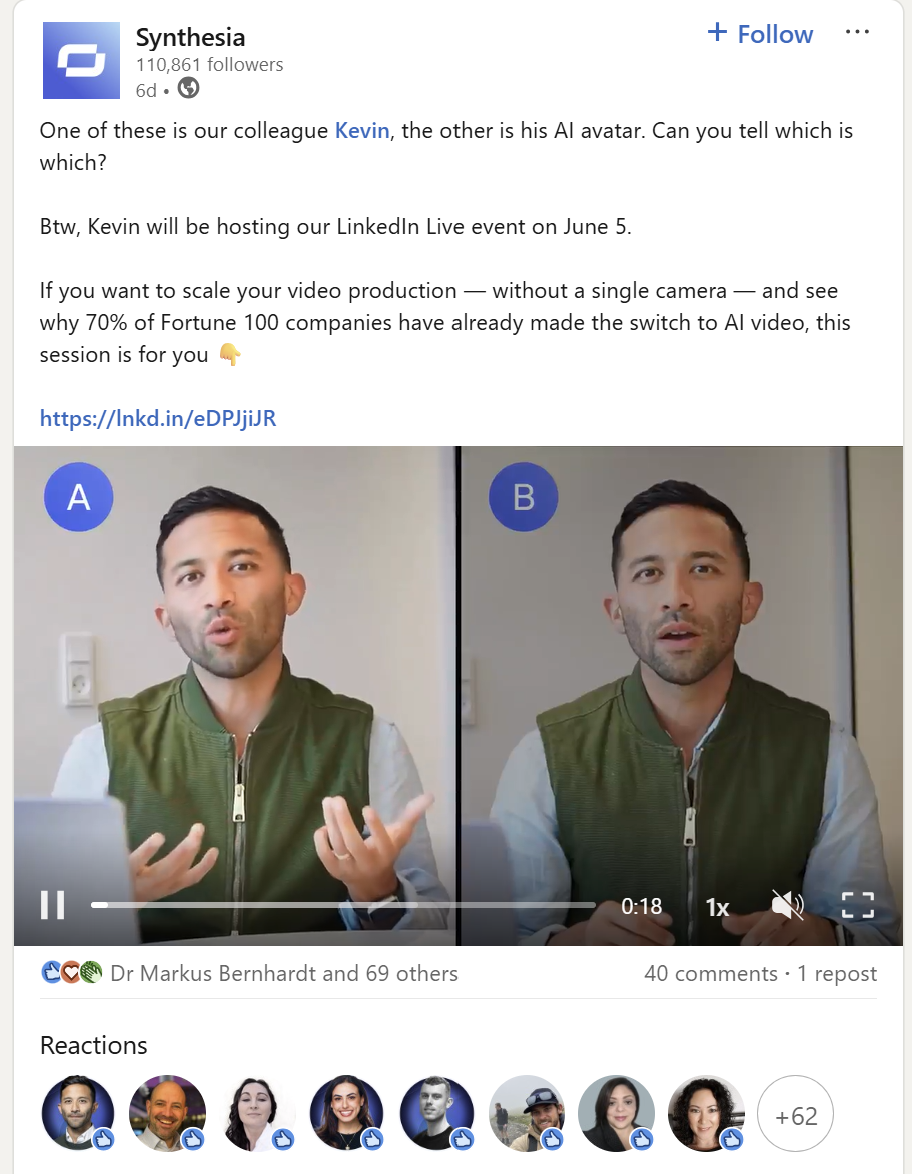
Engage in communities and niche forums: Join online communities like LinkedIn Groups, subreddits, Quora, or Slack groups to share valuable insights and build your expertise without direct promotion. This approach can lead to organic recognition and referral traffic.
There’s a Slack group for every market and industry, such as Online Geniuses, a Slack community made for marketers.

Consistency and authenticity matter: To succeed on social media, engage regularly by posting consistently and interacting daily. This fosters follower growth and brand mentions, expanding your reach through passionate users.
Additionally, participate in broader conversations by commenting on influencer posts and congratulating other startups. This visibility can pique curiosity about your brand. Social media is about listening and connecting, not just broadcasting.
Encourage user engagement: Getting early customers to engage with social media posts can provide valuable social proof. Encourage satisfied users to share their experiences or allow you to feature their stories, as user-generated content builds trust with new audiences.
Utilize social and community channels to humanize your brand and encourage conversations. Focus on engagement and value to build a loyal following that shares your content.
7. Educate and engage through webinars, videos, and podcasts
Not all content needs to be written; diversifying formats can expand your reach. Webinars, videos, and podcasts are effective channels for startups to showcase expertise interactively. They humanize your brand and engage audiences who prefer visual or auditory content.
Webinars are online workshops that can demonstrate products, host discussions, or provide valuable insights without a sales pitch. For instance, a cybersecurity startup might present current threats, attracting relevant IT professionals. Webinars are excellent for lead generation as they require sign-ups for attendance. They also allow for real-time Q&A, fostering rapport and feedback.
To maximize impact, choose a platform (like Zoom) and promote through various channels. Co-hosting with partners can enhance attendance. Record sessions for repurposing into blog posts or social media clips, ensuring ongoing lead generation.
SendBird, the startup that is building an enterprise-grade AI agent for customer service, has a resources page chock-full of engaging webinars with a mix of product demos, thought leadership, and industry tips. They gather leads by asking partiicpatns to fill in a form, allowing themt to gain access to the recording even if the event has passed.
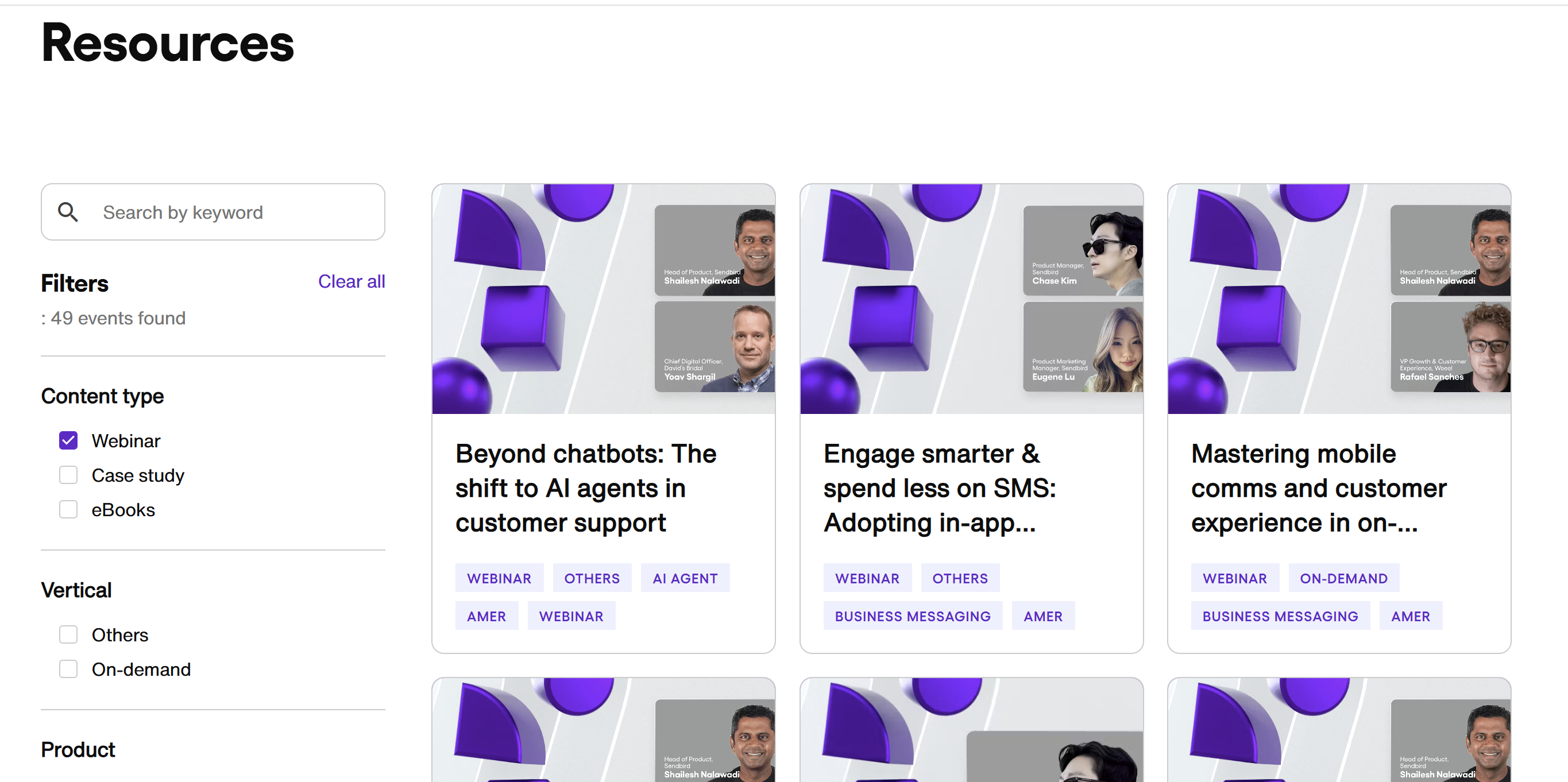
Videos are crucial, as YouTube is the second-largest search engine. Startups can utilize video for:
Product demos: Short videos can effectively showcase software features.
Educational content: Transform blog topics into explainer videos, optimizing for search to attract viewers.
Repurposed webinars: Share recorded webinars on YouTube or your site, or conduct live streams for real-time interaction.
Customer testimonials: Video endorsements build trust and credibility.
Company culture: Fun behind-the-scenes clips can humanize your brand.
Synthesia showcases case studies and human testimonials in the form of short video snippets located in a carousel on their homepage. These case videos, with fast load times and dynamic music, effectively highlight satisfied customers and build trust.
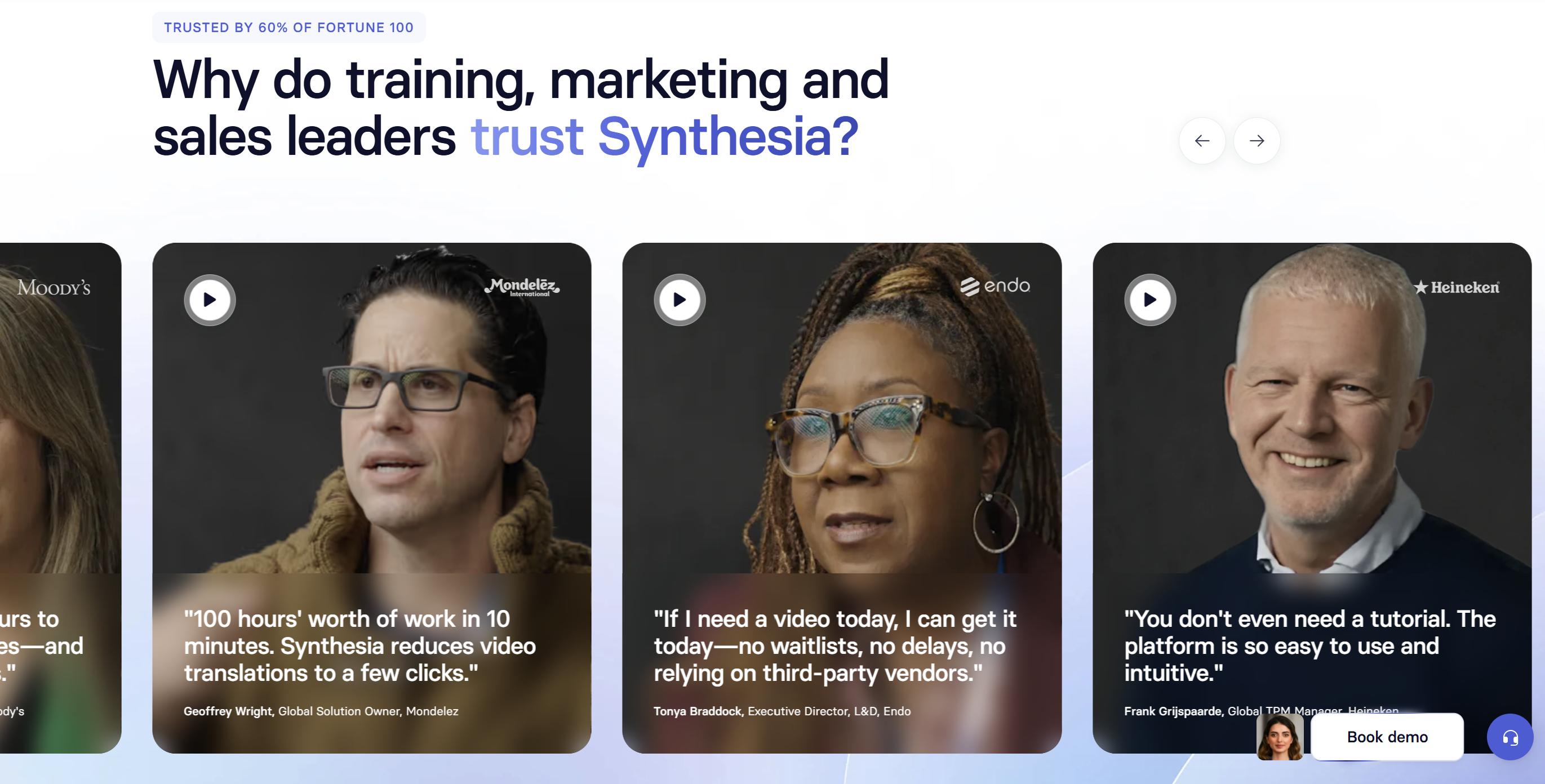
Quality doesn’t require high production values; authenticity is key. Simple videos can go viral, and publishing on YouTube enhances discoverability. Embedding videos on your site can increase engagement and improve SEO.
Podcasts have surged in popularity, offering a way to reach audiences during their daily routines. Podcasts are now offered in both audio and video formats and are distritubed across multiple channels.
Startups can benefit from:
Guesting on podcasts: This low-effort strategy allows you to share expertise and promote your startup to engaged audiences. Each appearance can introduce your brand to new listeners and create evergreen content.
Hosting your own podcast: A well-executed podcast can build a community and establish authority in your industry. Consistency and a clear concept are essential for growth.
Bloomberg give visibitliy to B2B tech companies and share thought leadership on their podcast Tech Disruptors by hosting brands like Asana, Monday.com, Lyft, Grafana, and Contentful. Companies like Gong have also launched their own podcast centered around providing educational content.
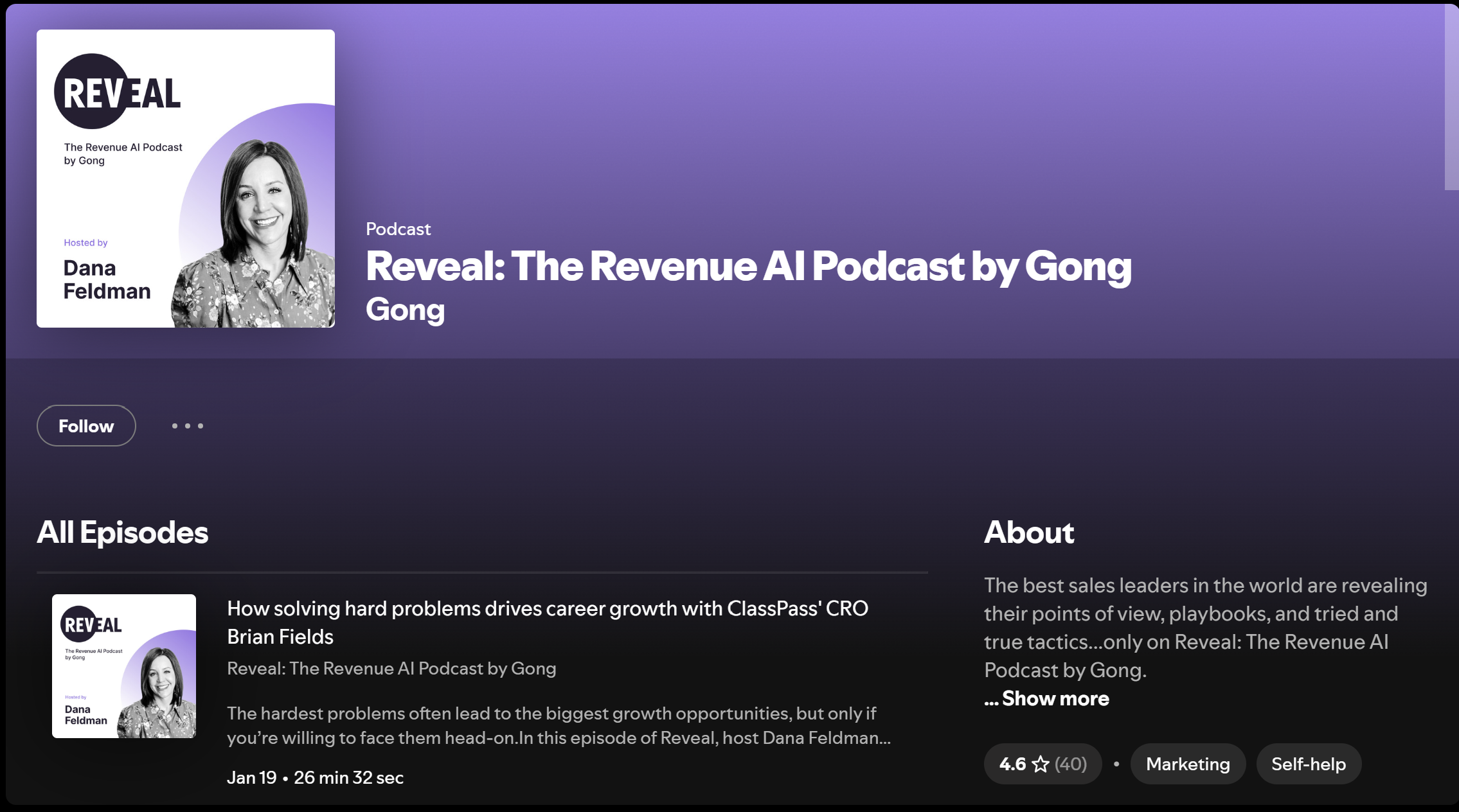
Both audio and video content can be repurposed into other formats, maximizing output without extra effort. For example, a webinar can become a blog post, and a podcast can be transcribed into an article. This strategy is efficient for startups with limited resources.
Multimedia content is also highly shareable, increasing brand visibility with minimal effort. Consider creating video tutorials, hosting live Q&As, or participating in podcasts to diversify your content strategy. This method helps you connect with audiences who like different ways of learning. It gives you an advantage over those who only use blogging.
8. Amplify Your Reach with partnerships and influencers
Collaboration can significantly enhance your content marketing efforts, especially for startups with limited audiences. By partnering with others, you can leverage their reach to grow your own. This includes working with partners, influencers, and communities, as well as utilizing paid promotion.
Co-marketing partnerships involve two organizations collaborating to create and promote content, like an eBook. Successful strategies include joint webinars and guest blogs, with clear role agreements and audience overlap.
B2B influencer collaborations target industry experts instead of celebrities, enhancing content marketing. Strategies include quotes, podcast swaps, and social media takeovers, while affiliate relationships can motivate product recommendations.
Community and user evangelism: Encourage satisfied customers to share success stories via contests. For developer products, use platforms like GitHub to build evangelists and implement ambassador programs for startups to incentivize trusted peer recommendations.
PR and awards: Although unconventional, press mentions and industry awards can boost your content's visibility. Showcase media coverage on a press page and repurpose PR content for your blog to enhance credibility and impact.
In another example, Akeneo presents yearly award to its partners in events held in Paris and Boston. Both the PIM (production information management) company and its partners, who are often startups or SaaS brands, benefit from the exposure.

Paid promotion: Organic strategies are important, but a small budget for paid promotion can enhance content visibility. Use targeted ads on LinkedIn or Twitter, syndication services, and sponsored posts to reach new audiences and generate leads.
9. Nurture and educate with email marketing
Email marketing remains a high-ROI channel for B2B startups, offering a direct line to interested audiences without algorithm interference. Email marketing is one of the most effective channels for driving conversions, with a 2.4% conversion rate for B2B brands. To get started, implement simple signup forms on your website and offer compelling reasons to subscribe, such as exclusive content or incentives. Even a slowly growing list is valuable, as it consists of individuals genuinely interested in your offerings.
To maximize engagement, send value-packed emails regularly. This could be a monthly email newsletter, weekly tips, or updates on new content. A consistent newsletter that combines your content with relevant industry insights positions you as a helpful resource. Remember, you own your email audience, allowing you to nurture leads over time and keep your brand top-of-mind.
Semrush utilizes email marketing not merely to announce product updates but to provide subscribers with actionable tips on maximizing the platform's benefits. These emails often include links to articles and videos, maintaining a conversational tone that reflects the brand's approachable and user-friendly image.
Best practices include personalizing emails, crafting strong subject lines, maintaining consistency without overwhelming subscribers, and including clear calls-to-action. Consider external channels like newsletter sponsorships to reach new audiences. Collaborating with established newsletters can expose your startup to thousands of potential customers.
Even a small email list can be valuable if it consists of the right audience. Treat early subscribers as VIPs, gather feedback, and build relationships that can lead to testimonials and referrals.
10. Measure, analyze, and iterate with intent
Content marketing doesn’t end when you hit publish. To truly grow, your startup needs to treat content like a performance asset by tracking what works, fixing what doesn’t, and continuously optimizing across channels. Here's how to do it smartly:
Connect content to revenue with real KPIs: Your content must pull its weight in revenue operations. Aim to look past vanity metrics at content-influenced revenue, lead conversions, ACV (Annual Contract Value), and MRR (Monthly Recurring Revenue). Use Google Analytics 4 (GA4) or CRM integrations to attribute sales events to content interactions.Then, establish KPIs per funnel stage.
Make your measurement sustainable by integrating it into your content operations from the start. That means setting OKRs (Objectives and Key Results), using a shared content calendar, and mapping every piece of content to a strategic goal.
Set up dashboards showing results by content type, channel, and persona.
Include performance reviews in your editorial process. Figure out what content got picked up in AI Overviews? What formats drive the most qualified leads?
Don’t silo analytics. Marketing, sales, and customer success teams should meet monthly to evaluate effective content and identify gaps.
Next you can iterate based on what the data tells you. Treat every piece of content as a learning opportunity. Repurpose what works, kill what doesn’t, and optimize high-performers to extend their lifespan.
To ensure that your articles are favored by generative AI engines, you want to keep updated content. A best practice is to set reminders to refresh articles every six to 12 months.
Regularly refresh old posts: Update stats, keywords, and examples to keep them relevant and boost GEO visibility.
Use AI tools (like ChatGPT or Semrush) to reanalyze top-performing topics and suggest adjacent themes or formats to test
Test prompts in AI tools to see how your site appears and adjust based on where you’re cited or ignored.
Content marketing as a defense against startup failure
Beyond generating leads, content marketing builds a defensible brand by creating a loyal audience. Consistently producing valuable content fosters a community that can provide support during challenging times. This long-term strategy can create a competitive advantage that is difficult for rivals to replicate.
Collaborate with other companies, engage influencers, and leverage your user community while utilizing PR and paid promotions to enhance reach. Startups can achieve significant visibility through strategic partnerships and guest appearances.
Focus on the channels that align with your audience and stage, providing genuine value to your customers. Start small, learn from feedback, and iterate on your strategy.
Now, take action by brainstorming content ideas, publishing your first blog post, or scheduling a webinar. The sooner you start, the sooner you’ll engage with potential customers. Good luck with your content marketing efforts!
Founder & CEO at Grow.Repeat
Alina is a B2B marketing leader with 10+ years of experience driving growth through content, SEO, and funnel optimization strategies. Formerly Head of Marketing at Semrush and Growth leader at Smartcat, she's led initiatives that delivered triple-digit pipeline increase and turned websites into scalable revenue engines. Alina specializes in building marketing systems that align with business goals, grounded in data and optimized for long-term impact.
.png)